And here they are. We had already seen it camouflaged and we had already seen its interior. Now we can properly appreciate the definitive shapes and lines of the new Audi Q4 e-tron and the sportier silhouette "brother", the Q4 Sportback e-tron.
The new pair of electric SUVs are the first Audi models to make use of the Volkswagen Group's MEB platform, the same one we can find on the Volkswagen ID.4, Skoda Enyaq iV and which will also form part of the future CUPRA Born.
At 4590mm long, 1865mm wide and 1613mm high, the Audi Q4 e-tron targets rivals like the Mercedes-Benz EQA or Volvo C40 Recharge and promises a vast cabin with lots of technology on board, highlighting, for example, the head-up display with augmented reality.
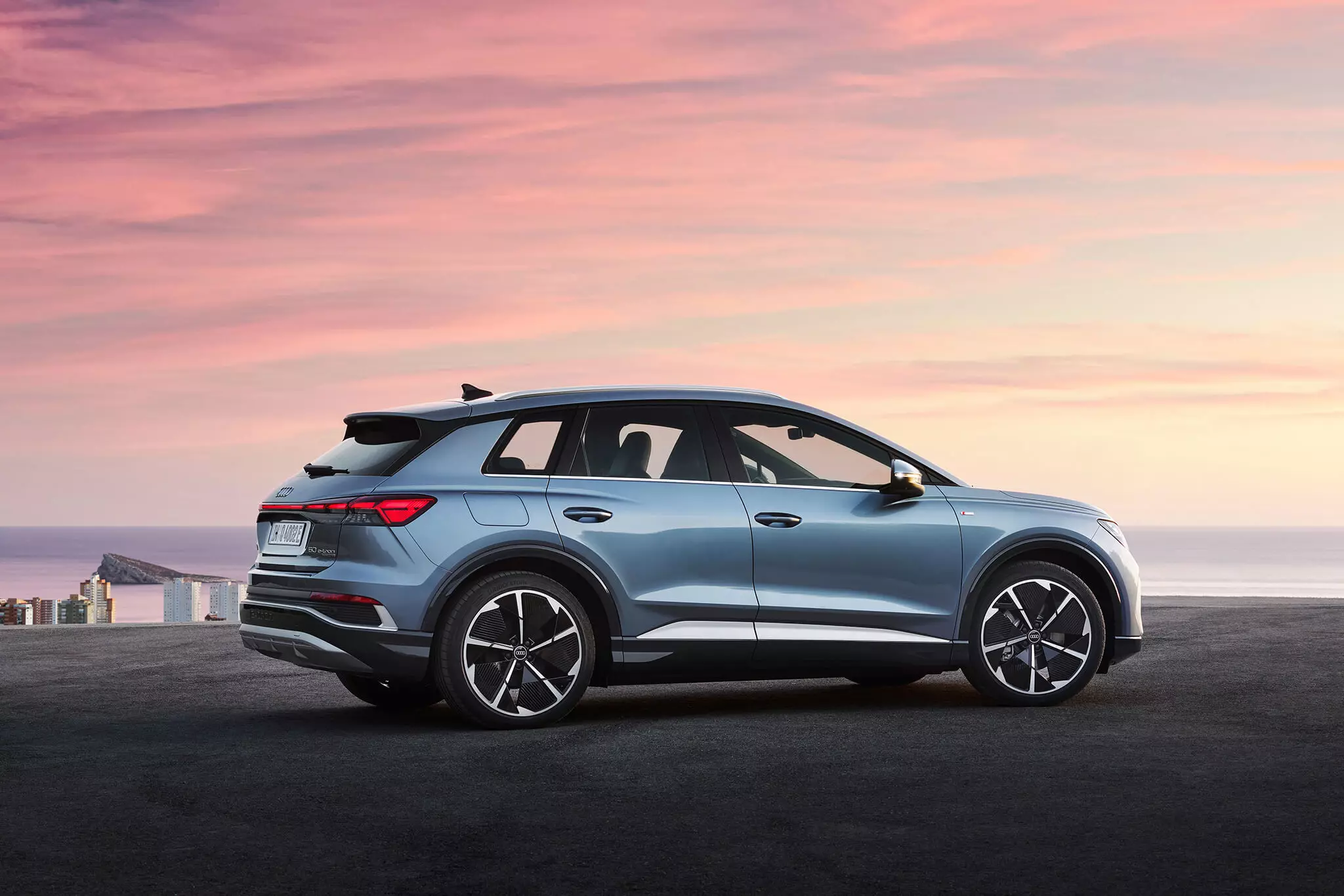
The lines, indisputably Audi and quite close to the concepts that anticipated them, are also quite aerodynamic, despite the fact that they are bodies with SUV (tall) genes. The Cx is just 0.28 and this is even smaller on the Sportback — just 0.26 — thanks to its slimmer silhouette and arched roofline.
Also in the aerodynamics chapter, Audi highlights its in-depth work on aerodynamics. From flaps on the front air intakes that open or close according to the need for cooling the batteries (guaranteeing an additional 6 km of autonomy) to the optimization that takes place in the bottom of the car.
It features spoilers in front of the front wheels that optimize airflow (+14 km of autonomy), has partially coated rear axle control arms (+4 km of autonomy) and also uses a rear diffuser that reduces lift positive on the rear axle.
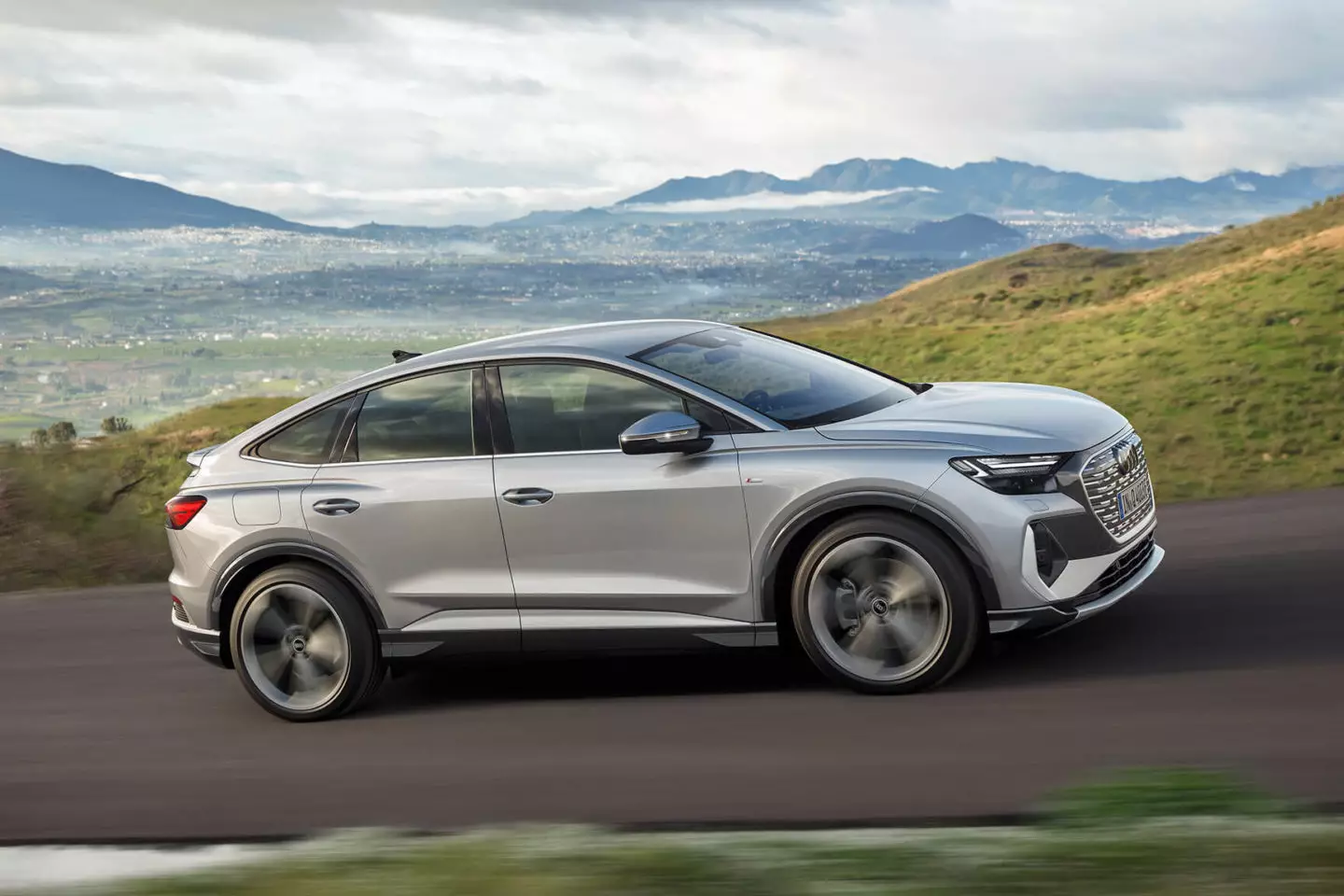
Audi Q4 Sportback e-tron
Space is not lacking
As we have seen in other MEB base models, the pair of Q4 e-tron also promise very generous internal quotas, which are on par with those of larger models, from segments above yours.
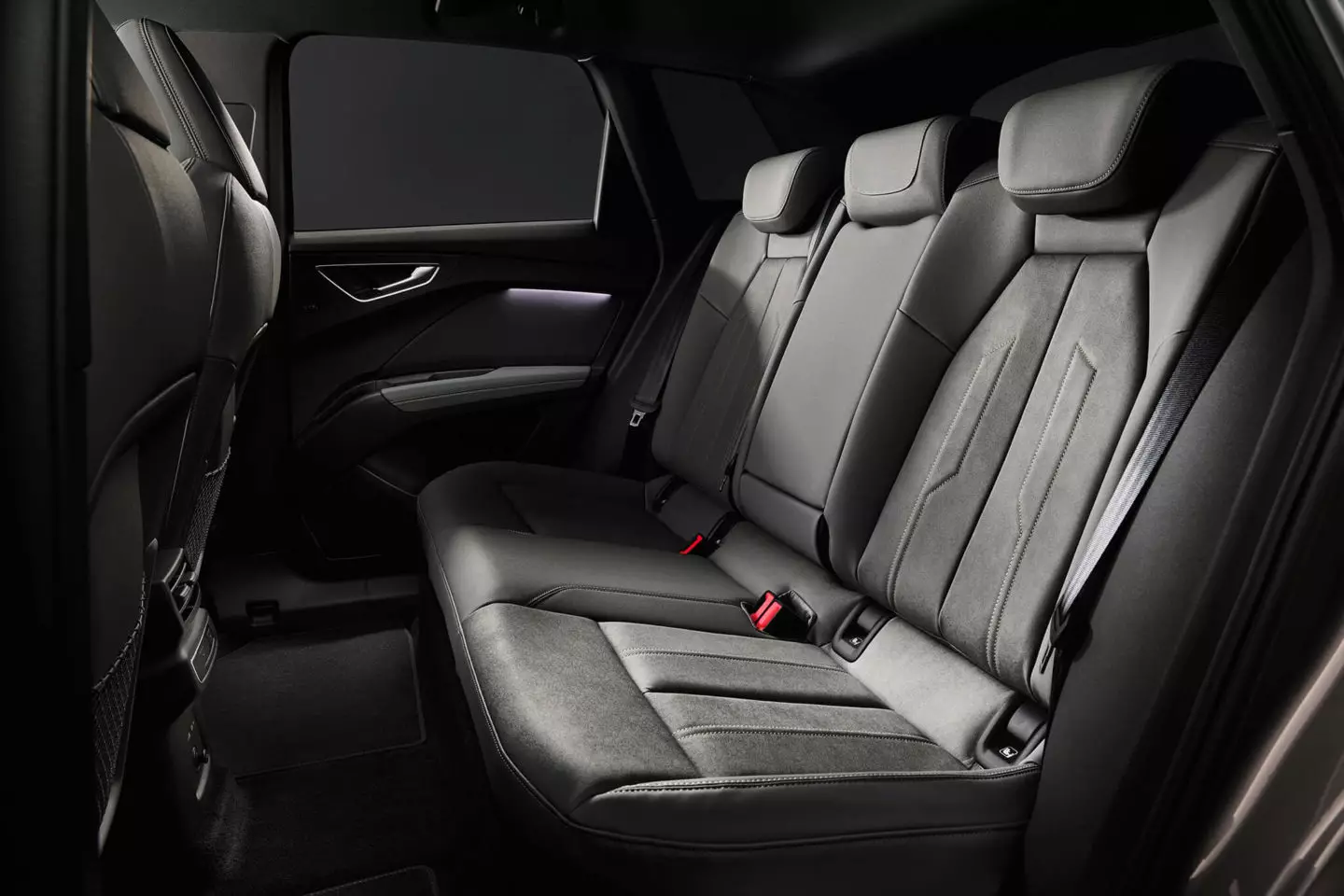
Rear passengers must have space to "give and sell"
Something only possible thanks to the architecture used: not only do the electric motors occupy less volume, but the batteries, placed on the platform floor between the axles, allow precious centimeters in length to be released into the cabin. And of course, with the engines positioned directly on the axles, there is no longer a transmission tunnel, with the floor of the cabin being completely flat.
The same can be said about the trunk, which is quite large for the dimensions of this SUV. Audi advertises 520 l of capacity for the Q4 e-tron, a figure identical to the larger Q5. In the case of the sportier Q4 Sportback e-tron, this figure rises, curiously, to 535 l.
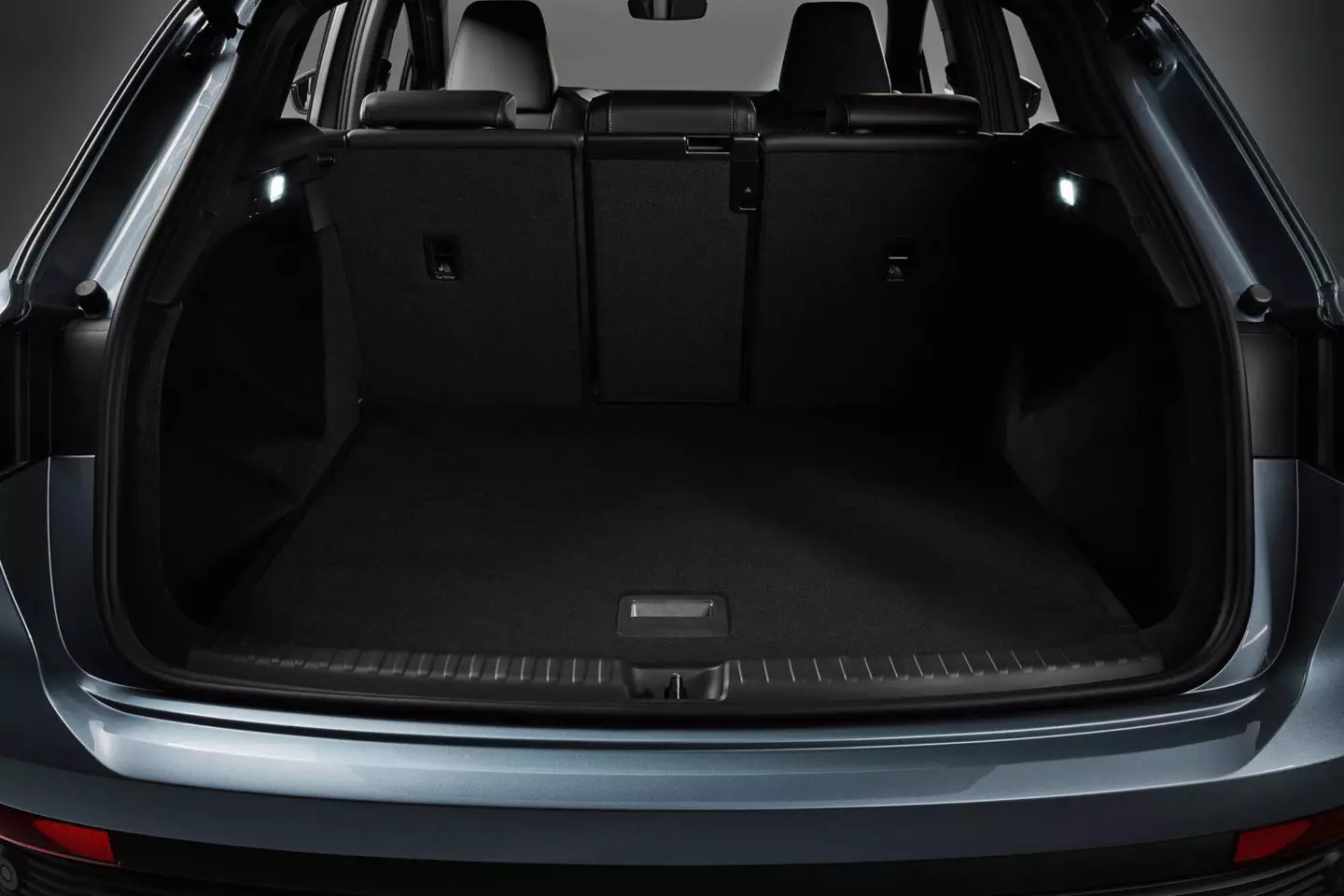
At 520 l, the trunk of the Audi Q4 e-tron matches that of the larger Q5.
Audi also advertises a total of 25 liters of storage space — including the glove compartment — in the cabin of the Q4 e-tron.
Perhaps the most curious thing is the space that allows you to store bottles of up to one liter in capacity, positioned at the top of the door:
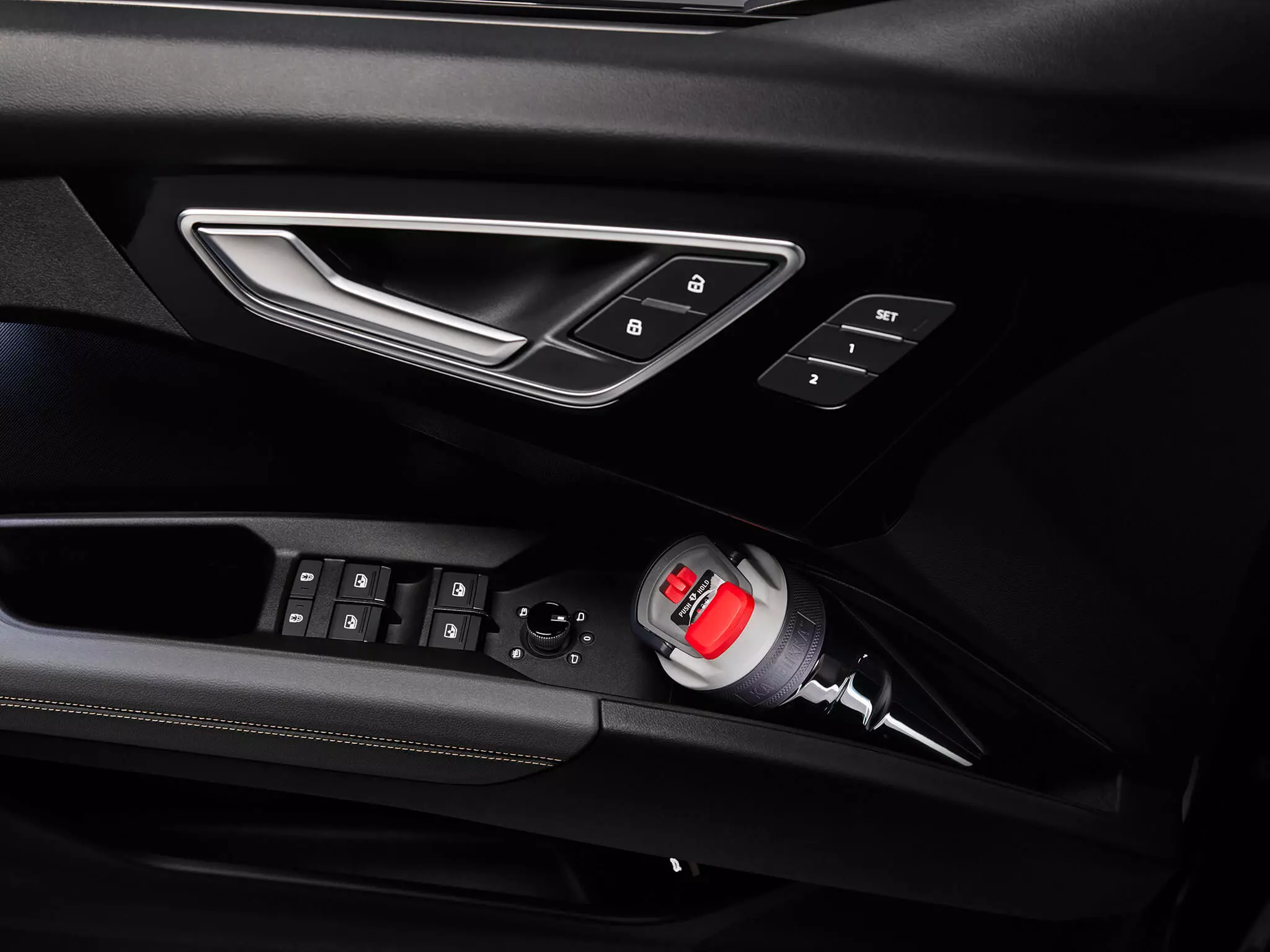
Scanning dominates, but…
As you would expect, digitization dominates on the inside. However, unlike other proposals, including those within the Volkswagen Group that use this same base, Audi has not given in to the minimalist trends that “sweep” all the physical buttons from the cabin.
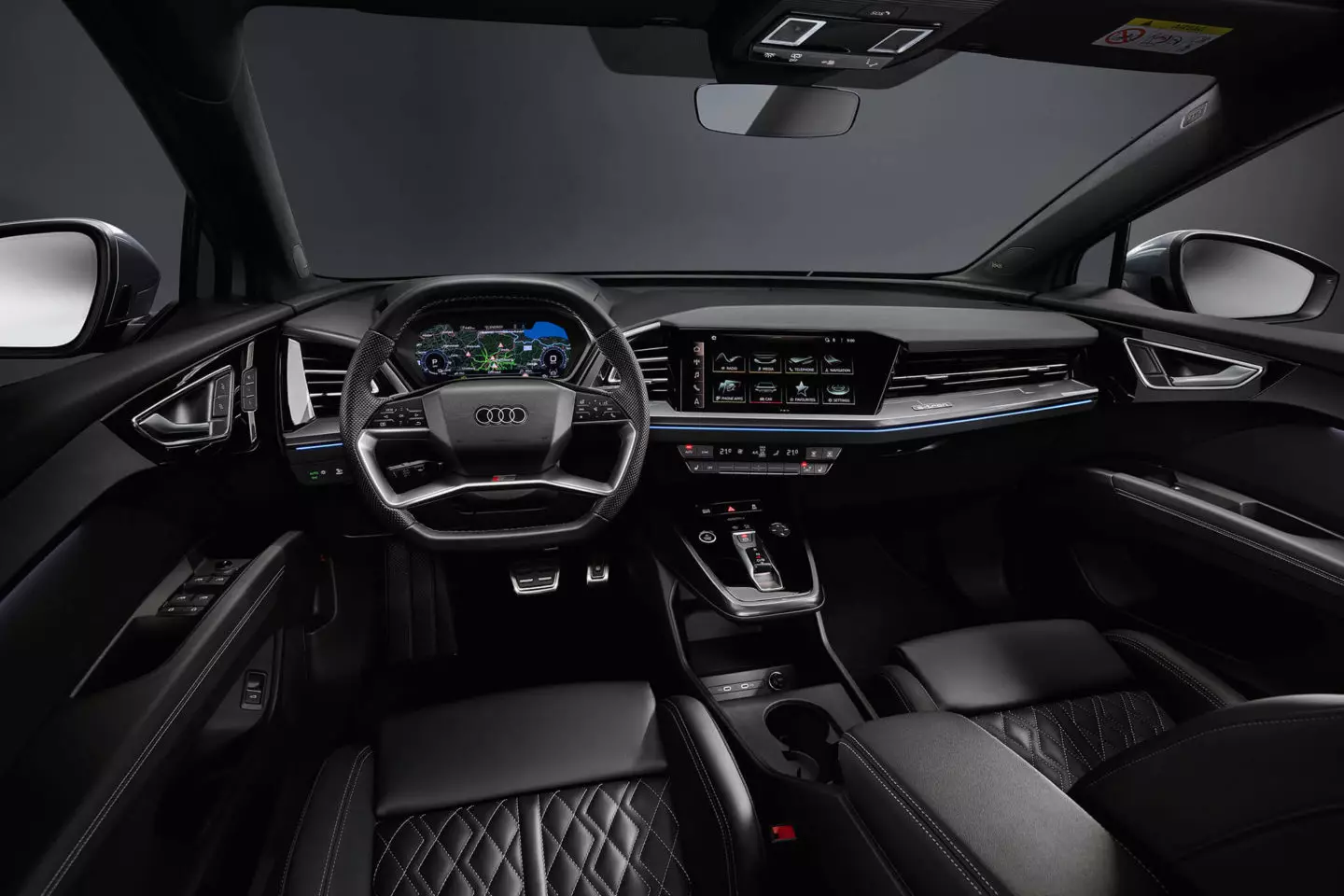
As we saw in the new A3, Audi retains some physical controls, such as the climate control, which avoid using the MMI Touch infotainment system (10.1″ as standard, optionally with 11.6″) to interact with it — usability thanks.
But technology is not lacking on board. The instrument panel is our well-known 10.25” Audi Virtual Cockpit, but the big news is the use of a new head-up display with augmented reality (optional).
The Q4 e-tron is the first Audi to have this technology, which allows us to superimpose information (including navigation commands) on our field of vision, projected on the windshield with different degrees of depth, appearing to be “floating” over what we are seeing.

Three power levels, two batteries
The new Audi Q4 e-tron will initially be released in three versions: Q4 35 e-tron, Q4 40 e-tron and Q4 50 e-tron quattro. Associated with them we will also have two batteries: one of 55 kW (52 kWh net) and another, bigger, of 82 kWh (77 kWh net).
THE Audi Q4 35 e-tron comes equipped with a rear engine of 170 hp (and 310 Nm) — therefore, the traction is rear — and is associated with a 55 kWh battery, reaching 341 km of autonomy. The Q4 Sportback 35 e-tron, manages to go a little further, reaching 349 km.
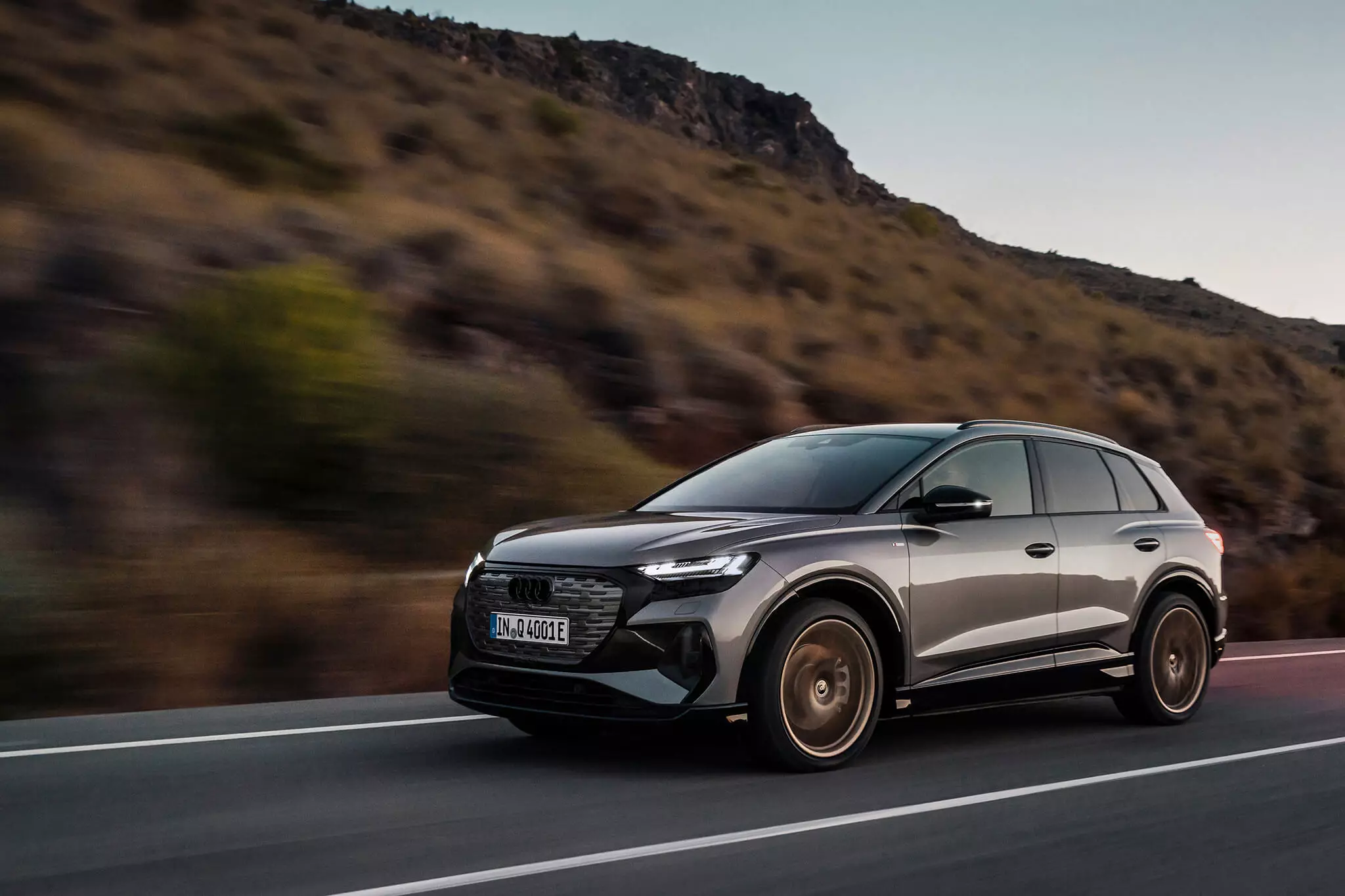
THE Audi Q4 40 e-tron it maintains only a rear engine and rear-wheel drive, but it now produces 204 hp (and 310 Nm) and uses the 82 kWh battery. The autonomy is 520 km and it is the one that goes the farthest among all the Q4 e-trons.
The top of the range is, for now, the Q4 50 e-tron quattro . As the name implies, it now has four-wheel drive, courtesy of a second engine mounted on the front axle with 109 hp, which boosts maximum power up to 299 hp (and 460 Nm). It is only available with the 82 kWh battery and its range is 488 km on the Q4 e-tron and 497 km on the Q4 Sportback e-tron.
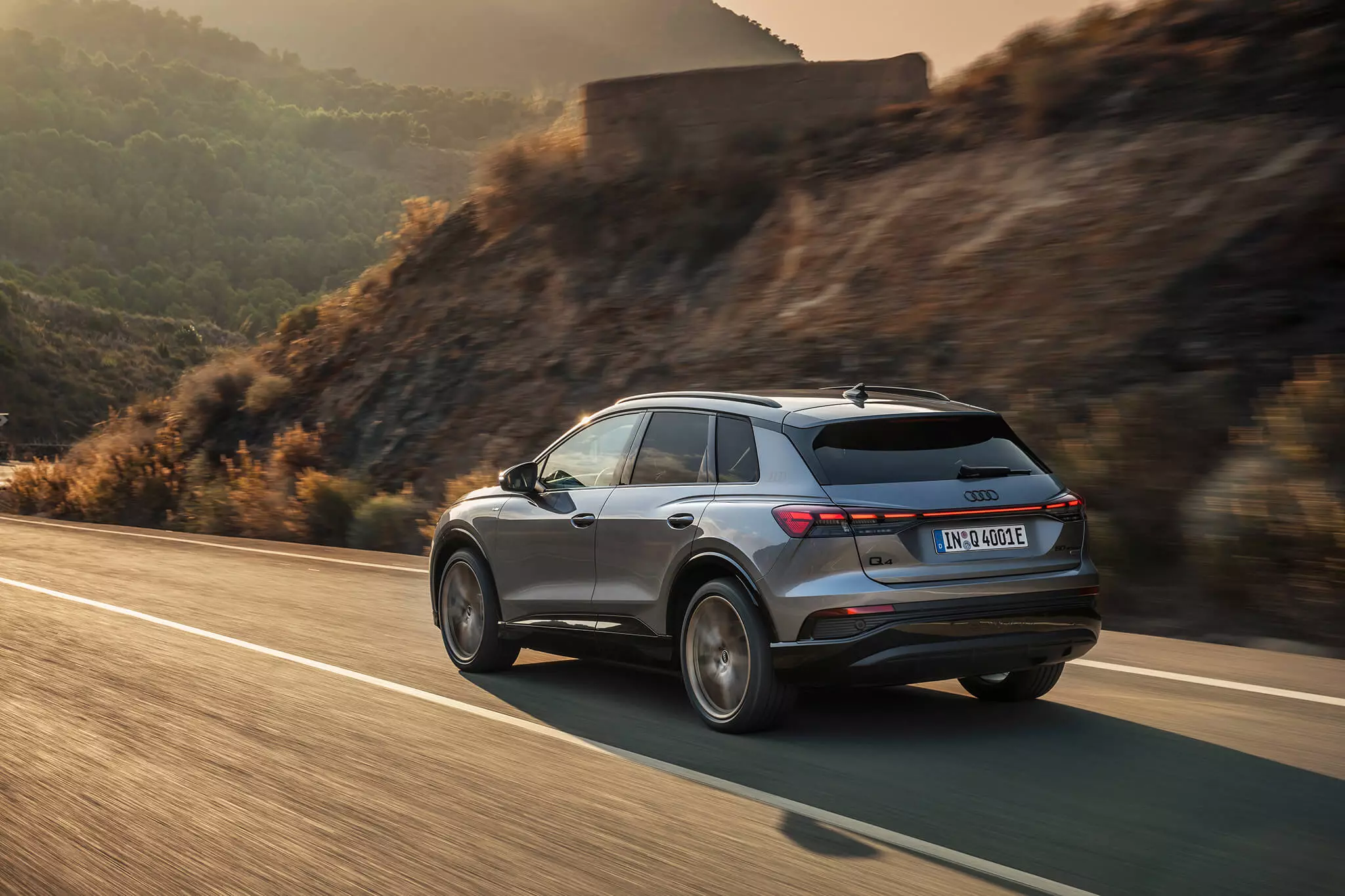
In terms of performance, the 35 e-tron and 40 e-tron can accelerate up to 100 km/h in, respectively, 9.0s and 8.5s, with both being limited to 160 km/h. The 50 e-tron quattro reaches 100 km/h in the most interesting 6.2s, while the top speed goes up to 180 km/h.
If the benefits seem just… nice, maybe the mass of these electric SUVs is the main culprit. As we know, batteries are synonymous with huge ballast, with the Audi Q4 e-tron charging 1890 kg in its lightest version (30 e-tron), and 2135 kg in the heaviest (50 e-tron quattro).
Loadings
The Audi Q4 e-tron and Q4 Sportback e-tron can be charged up to 11 kW with alternating current and 125 kW with direct current. In the latter case, 10 minutes of charging are enough to recover 208 km of autonomy.With the smallest battery (55 kWh), the power values drop a little, being able to charge up to 7.2 kW with alternating current and 100 kW with direct current.
under control
Having the battery placed between the axles, on the floor of the MEB platform, gives the Q4 e-tron a lower center of gravity than expected in an SUV. The weight distribution is also improved, being close to 50/50 in all versions.

The front suspension follows a MacPherson scheme, while the rear has a multi-arm suspension — five in total — similar in design to that used in larger models of the brand. The wheels are also large in size, with wheels ranging in diameter from 19″ to 21″, with some of the designs focusing on superior aerodynamic performance.
The most curious part about the configuration of these new models is that they are, for the most part, rear-wheel drive, an unusual feature at Audi. Besides the R8, there are no models designed from scratch to be rear-wheel drive in the brand. The trend in these SUVs will thus be oversteer rather than understeer, but the Ingolstadt brand says that control systems such as ESC (stability) will be on the alert to ensure the precise and safe behavior we recognize from the brand.
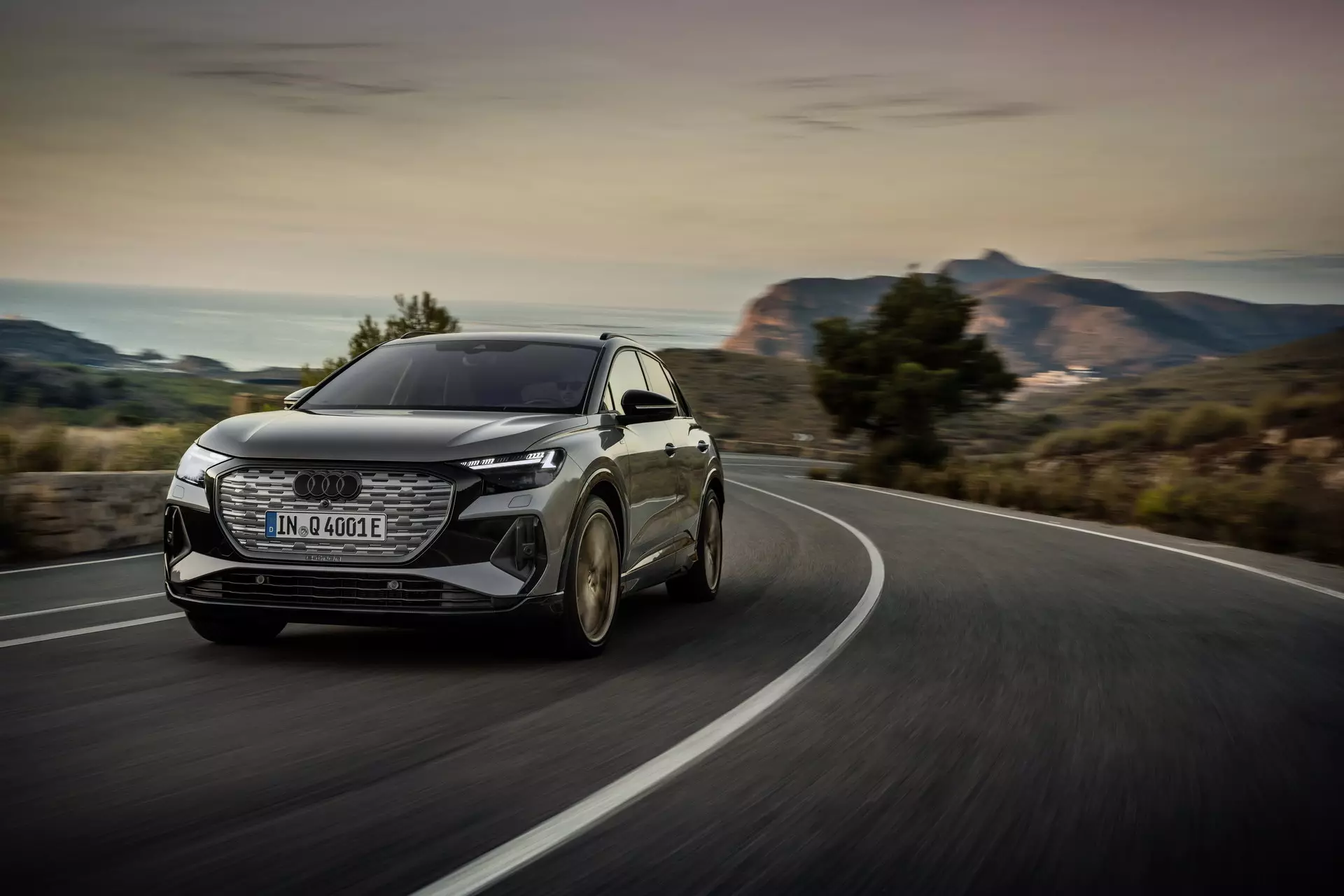
However, there is room to make the dynamics sharper. Two optional dynamic packages will be available: Dynamic and Dynamic Plus. The first adds a sport suspension (standard on the S line) that reduces ground clearance by 15 mm, replaces the steering with a progressive one (standard on the quattro) and adds driving modes (standard on the Sportback).
The second, Dynamic Plus, adds adaptive damping, capable of automatically adjusting at five-millisecond intervals. It also intervenes on the brakes with the help of ESP (stability control), to better distribute torque to the wheels that need it most.
drums back
Braking will be carried out by front discs which will have a diameter between 330 mm and 358 mm. But behind us we will have the “good old” drum… How? That's right.
It is easy to justify this decision by Audi. The truth is that in electric vehicles, with regenerative braking systems, the mechanical braking system does not have the frequent and intense use as in a vehicle with an internal combustion engine. The longevity of inserts and discs is several times longer, requiring a much lower frequency of replacement — cases of inserts lasting well over 100,000 kilometers are more than many.
Using drum brakes, it also reduces wear, maintenance is also lower and the risk of corrosion is also lower.
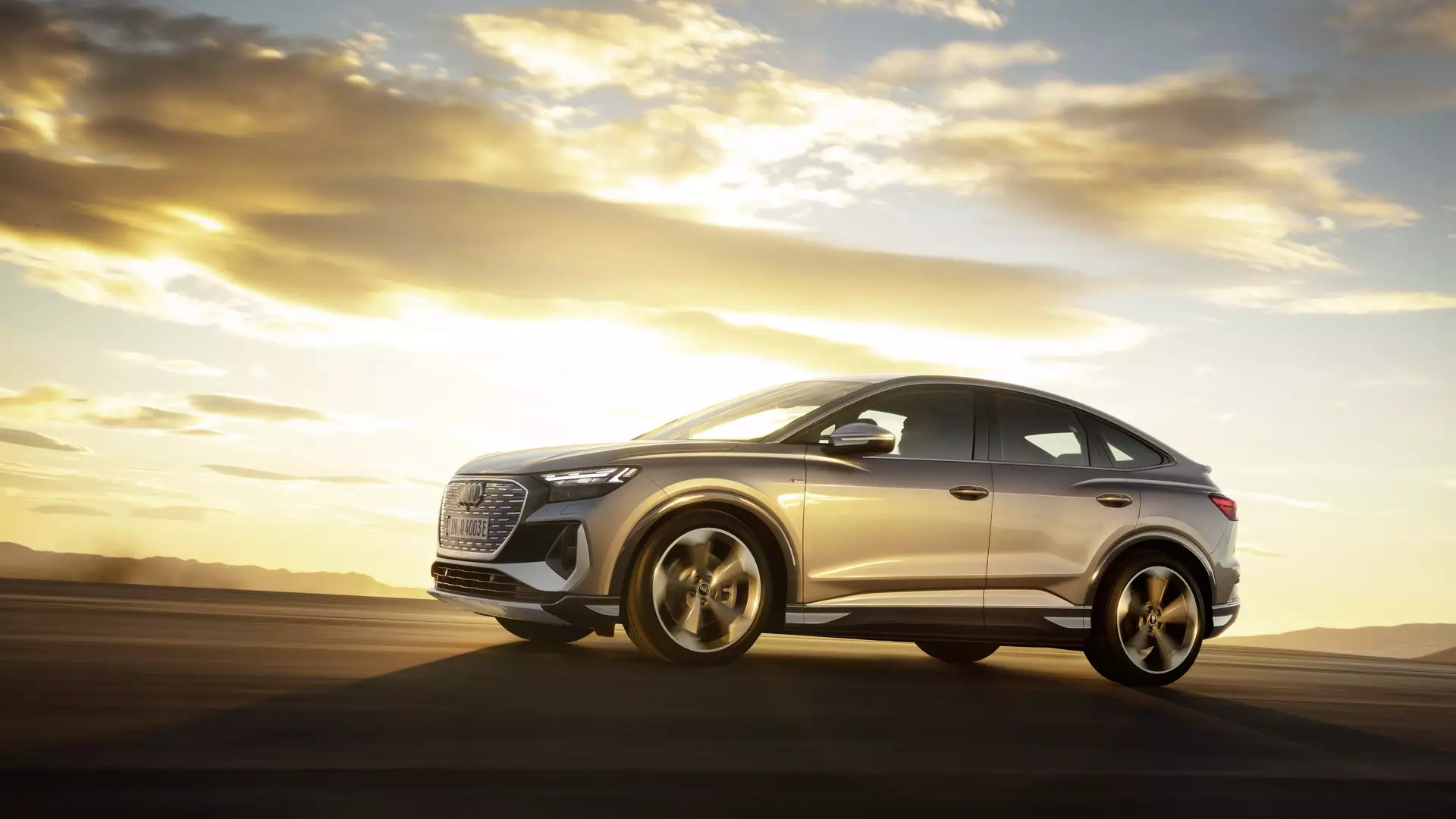
The Audi Q4 e-tron in Portugal
The arrival in our market of the Audi Q4 e-tron is indicated for the month of June, with prices starting at 44 700 euros . The Q4 Sportback e-tron will arrive later, with its launch scheduled for late summer, with no price estimate yet.
